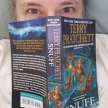Let an Animal Tell the Weather
Winter's Cross Quarter Day

When my kids were in kindergarten, February rolled around and they were given Xerox papers with pictures of furry little rodents to color and cut out. Then they glued them on Popsicle sticks and popped them up and down out of a slit in another piece of paper. If they didn't like Winter that year, they made sure to keep that furry little rodent sticking up from the slit for a while.
Of course, this holiday is Groundhog Day, the only day in the modern Western calendar that Americans and Canadians actually allow a species of animal to foretell the weather. Why only Americans and Canadians? Because groundhogs only live in North America, as far north as Alaska, and as far southeast as Alabama. Groundhogs are also known as land-beavers and woodchucks. So if you see some groundhogs, you can give them heck for chucking all your wood.
But there is something that has always confused me. If the groundhog sees his shadow there is to be six more weeks of Winter. Groundhog day is February 2nd. The First Day of Spring is
March 20th. Six more weeks of Winter brings us to March 16th. The groundhog has decreed six more weeks of Winter and yet we have six weeks and three days. Why isn't Groundhog day on February 6th?
Because February 2nd is exactly halfway between the Winter Solstice and the Spring Equinox. Any day that falls just about half way between any solstice and any equinox is called a cross-quarter day and long before the Europeans brought their culture and customs to North America to discover the groundhog and name a day after it, this day was called Imbolc, and later, the Feast of St Brigid.
Imbolc, you see, has always been a very important festival to the Celts of Ireland. Many references have been found in historical legends and ancient mythologies mentioning it. Imbolc could be celebrated on either February 1st or the 2nd, and it marked, what else, the beginning of Spring. It was also probably a good reason to break out of the Winter doldrums and get out of the house. The celebration was about the home and hearth, and the sharing of both. People got together to foretell the future, and sat watch by the entrance to animal dens to see if they might be stirring a bit earlier in the year than usual. Can you imagine sitting by a snake hole to see if it comes out? What about a badger? Wait, isn't a badger a bit like a groundhog?
But Imbolc is more than sitting outside in the cold. No matter how dark the day, houses and towns alike were ablaze in light from bonfires to candles. Imbolc also celebrated the Gaelic goddess Brid. Also known as Brighid, she was the goddess of the sacred flames, as well as poetry, healing and smithcraft. Lighting candles in her honor was a promise of the return of the warmth of the Sun. As Ireland became Catholic, Brid became St Brigid, and Imbolc was renamed Candlemas.
There are of course three other cross-quarter days throughout the year, and these were celebrated as well. The next one will be Beltane, on May 1st, or May Day. Then comes August 1st, Lughnasadh. As far as I know we have no equivalent modern celebration. But the last cross-quarter day is the most familiar. It falls on either October 31st or November 1st and the Celts called it Samhain, but of course we all know it better as Halloween.
Books to learn more about Groundhog Day, Gaelic History, Brid and St Bridgid:
The Groundhog Day Book of Facts and Fun by Wendie C. Old, illustrated by Paige Billin-Frye, is mostly about the famous Punxsutawney Phil, but it also talks about groundhogs in general and other animals that have been asked to foretell the weather. There's even some projects for the day. Good for kids, maybe as old as 12.
Tales of the Elders of Ireland (Oxford World's Classics) translated by Ann Dooley and Harry Roe. This is the real deal. It is "the largest literary text surviving from twelfth-century Ireland". Ancient giants called Fenians, brave Irish Kings, the Otherworld shape shifting fae, and even St Patrick and his angels.
The Complete Idiot's Guide to Irish History and Culture by Sonja Massie, just in case you would rather skim and peruse than sit down with a heavy tome.
The Rites of Brigid: Goddess & Saint by Sean O Duinn and Brigid: Goddess, Druidess and Saint by Brian Wright both compare and contrast the two personas.
About the Creator
Cie McCullough
I write about history, travel, and whatever crosses my mind. I love to explore and learn, and love history as much as science. I take a different view of the world, and do my best to convey that view when I write.






Comments
There are no comments for this story
Be the first to respond and start the conversation.